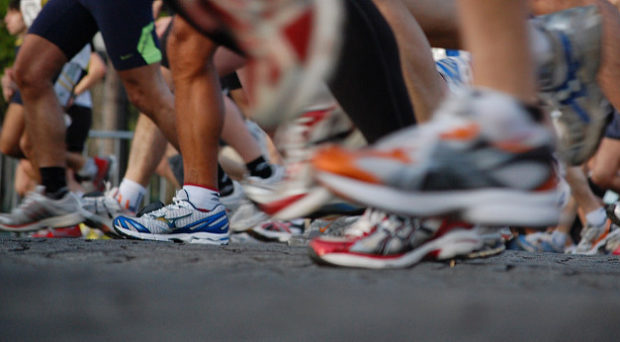
Running as a major leisure activity is still becoming more and more popular. In Switzerland, 23.3% of the Swiss population (aged 15 to 74 years) is running at least once a week. In Europe, the number of regular runners can be estimated to be 50 million and in the US, more than 40 million people run.
The benefits on mental and physical health are unquestioned, but injuries of the musculoskeletal system are quite frequent, depending on the running populations studied. Most injuries are attributed to overuse and involve mainly the lower extremity.
Recent evidence shows that symptom relief is possible by wearing foot orthoses at least for some running-related pathological conditions.
Therefore prevention should be a key element for runners; but scientific proof for preventive measures is rare. The first line management of overuse injury is the application of conservative treatment regimens. Foot orthoses can serve as one option in non-surgical therapy. There are still not enough high-quality studies (controlled, randomized) out there but recent evidence shows that symptom relief is possible by wearing foot orthoses at least for some running-related pathological conditions like Achilles tendinopathy, patellafemoral pain, anterior knee pain, or plantar fasciitis.
Therapy potential of foot orthoses
We performed a study on the general therapy potential of foot orthoses in overuse injury where we did not focus on specific diagnoses. We included in this trial: running related overuse injuries and the random allocation of subjects, which led to an equal distribution of injury patterns in the intervention group (8-week use of foot orthoses during running training) and the control group (8-week regular running training). The results showed a promising reduction of pain induced impaired function (-58%).
Pathologies of the forefoot region like metatarsalgia are thought to be treated with unloading of the symptomatic areas. There are several options out there to configure foot orthoses with specific construction elements to achieve the proposed goal of unloading. In Europe, two common strategies for foot orthoses construction are used: The traditional approach is to incorporate a metatarsal pad in the midfoot region to redistribute high pressure from the forefoot to the midfoot. A newer approach, mainly used in foot orthoses for sports applications, strives to integrate a softer cushioning material in the forefoot region to directly lower high pressure under symptomatic areas. The two approaches and the possible superiority of one or the other rationale are subject of controversial debate in the field of orthopedic technology.
These controversies were the starting point for our recent study: Our goal was to compare the effect of an integrated forefoot cushioning element with the effect of a metatarsal pad on peak pressure at the forefoot during running.
Results showed that the cushioning option was able to reduce pressure significantly but the metatarsal pad condition could not elicit any reduction compared to a control foot orthoses. Therefore, from a biomechanical point of view, we can recommend forefoot cushioning in the forefoot region if mechanical unloading is the goal.
This applies for high dynamics like running movement at regular training speeds (test speed was 12 km·h-1 / 2.78 m·s−1). We checked this also with regular foot orthoses for normal footwear at a walking speed. This is yet unpublished (only in conference format, German) but we can conclude from this additional study, that at low dynamics like walking, both strategies can reduce peak pressure compared to a control orthoses.
Great study, good informations.